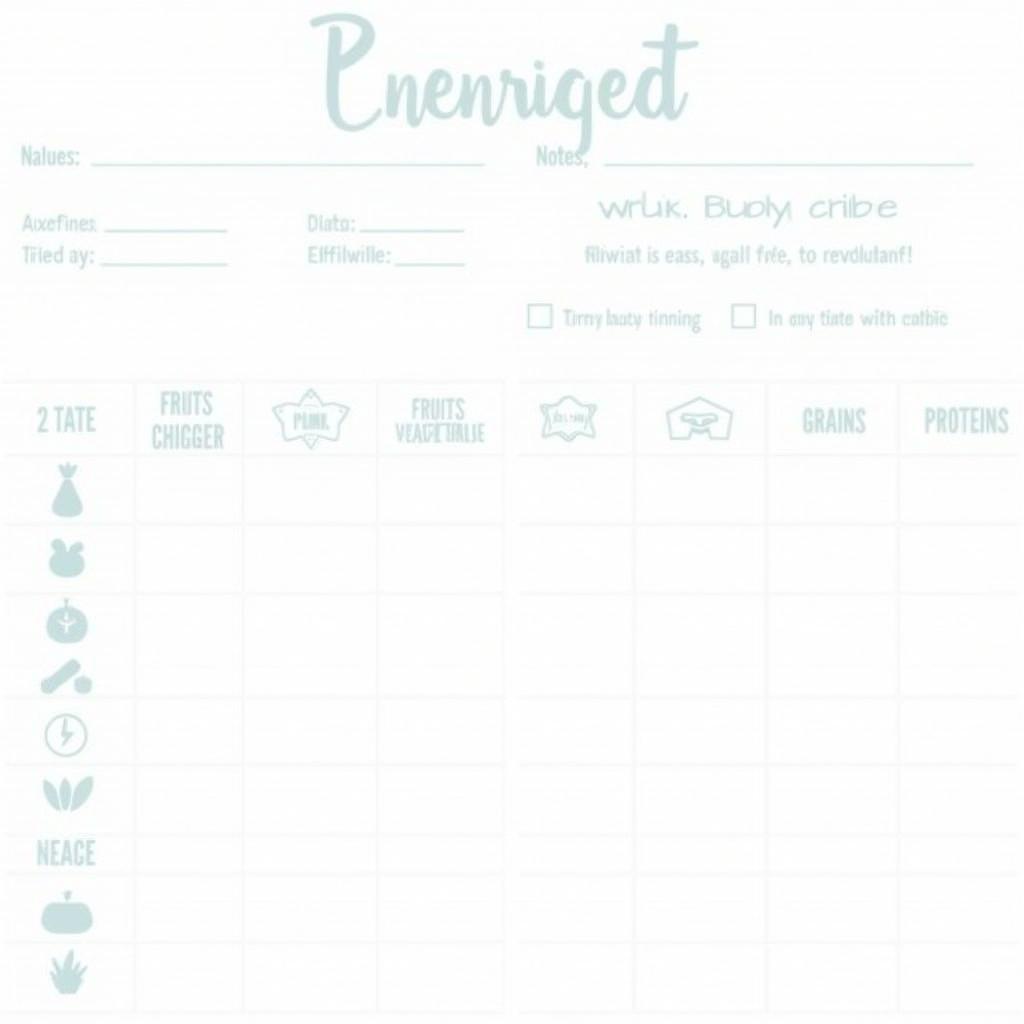Starting solids is a huge milestone for your baby, and having a Printable Baby Food Checklist can make this exciting (and sometimes overwhelming) journey much smoother. This checklist helps you track your baby’s food adventures, ensuring a balanced and diverse diet as they explore the world of flavors and textures. It’s all about making the transition to solid foods easier for both you and your little one.
Why Use a Printable Baby Food Checklist?
A printable baby food checklist is a valuable tool for parents embarking on their baby’s food journey. It provides a structured approach to introducing solids, helping you keep track of which foods have been tried, any reactions, and your baby’s preferences. It also helps ensure dietary diversity, exposing your little one to a wide range of nutrients crucial for growth and development. Plus, it’s a great way to remember those special first food moments.
Having a visual reminder of what your baby has tried can also help reduce anxiety around introducing potential allergens. You can easily note any reactions and consult with your pediatrician if needed. It’s a simple yet powerful tool that empowers you to confidently navigate this exciting phase.
 Printable Baby Food Checklist Example
Printable Baby Food Checklist Example
Creating Your Own Baby Food Checklist
While there are plenty of pre-made checklists available online, creating your own allows for personalization based on your baby’s needs, your family’s dietary preferences, and any cultural considerations. Think about including sections for different food groups, such as fruits, vegetables, grains, and proteins. You can also add columns for the date introduced, any reactions observed, and notes about your baby’s likes and dislikes.
Remember, introducing solids is a gradual process. Start with single-ingredient purees and slowly introduce new foods one at a time, waiting a few days between each new addition. This helps identify any potential allergies or intolerances.
What to Include in Your Checklist
Your checklist should be comprehensive yet easy to use. Consider including the following:
- Fruits: Applesauce, bananas, pears, peaches, avocados
- Vegetables: Sweet potatoes, carrots, green beans, peas, squash
- Grains: Oatmeal, rice cereal, barley cereal
- Proteins: Chicken, turkey, lentils, beans, tofu
 Baby Enjoying First Foods
Baby Enjoying First Foods
Don’t forget to consult your pediatrician for personalized advice and recommendations based on your baby’s individual needs and developmental stage.
Using Your Printable Baby Food Checklist
Once you’ve created your 100 foods before 1 checklist, the fun begins! As you introduce new foods, be sure to record the date, any reactions, and your baby’s preferences. This will help you create a personalized feeding plan as your little one grows and develops.
Tips for Success:
- Start Slow: Introduce one new food at a time, waiting a few days before introducing another.
- Be Patient: It can take multiple tries for a baby to accept a new food. Don’t give up!
- Observe Reactions: Pay attention to any signs of allergies or intolerances.
- Make it Fun: Mealtime should be a positive experience for both you and your baby.
“Introducing solids is a journey of discovery for both parent and child,” says registered dietitian, Sarah Miller. “A checklist provides a roadmap, ensuring a balanced and enjoyable experience.”
 Family Enjoying Mealtime
Family Enjoying Mealtime
Conclusion
A printable baby food checklist is an invaluable tool for navigating the exciting world of introducing solids. It provides structure, helps track progress, and empowers parents to confidently nurture their baby’s growing palate. With a well-planned checklist and a dash of patience, you can make this milestone a positive and memorable experience for both you and your little one. Remember to download your personalized checklist today and embark on this amazing journey!
FAQs
-
When should I start solids? Most babies are ready for solids around 6 months of age. Consult with your pediatrician for guidance.
-
What are some good first foods? Single-ingredient purees like avocado, sweet potato, and banana are excellent choices.
-
How much food should I offer? Start with small amounts and gradually increase as your baby gets used to solids.
-
What if my baby refuses a new food? Don’t worry! It can take multiple tries for a baby to accept a new flavor or texture.
-
What are signs of a food allergy? Watch for hives, rash, swelling, vomiting, or difficulty breathing. Contact your pediatrician immediately if you suspect an allergy.
-
Can I use store-bought baby food? Yes, store-bought baby food is a convenient option, just be sure to choose options with no added sugar or salt.
-
How do I store homemade baby food? Store homemade baby food in airtight containers in the refrigerator for up to 3 days or in the freezer for up to 3 months.
For further information on feeding your little one, check out our 100 foods before 1 checklist. You might also find our articles on baby-led weaning and making your own baby food helpful.
When you need assistance, please contact us at Phone Number: 02437655121, Email: [email protected] or visit us at 3PGH+8R9, ĐT70A, thôn Trung, Bắc Từ Liêm, Hà Nội, Việt Nam. We have a 24/7 customer service team.